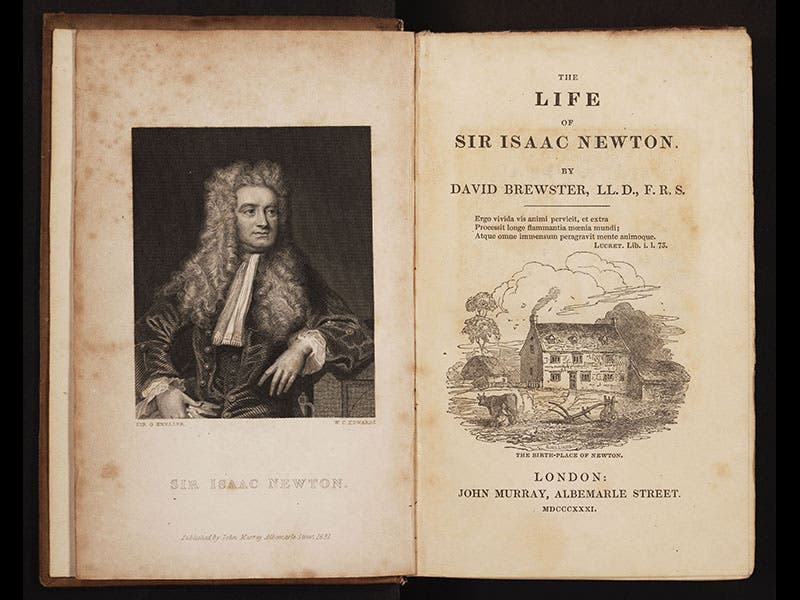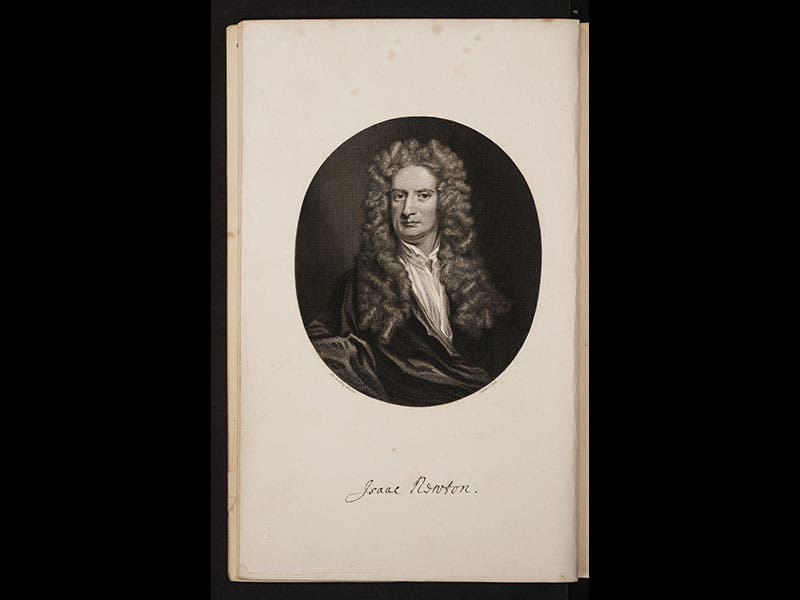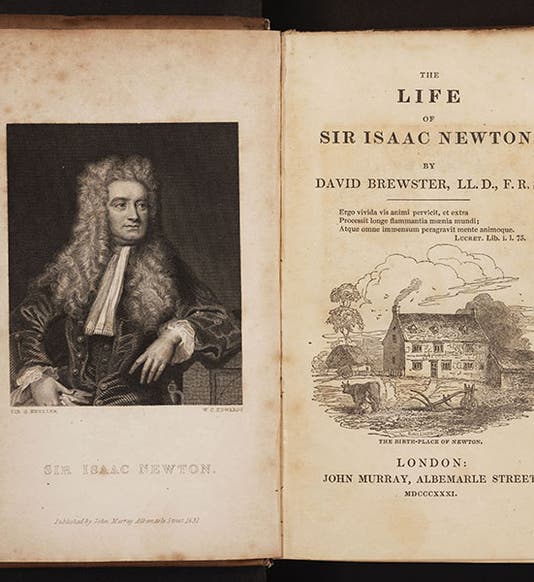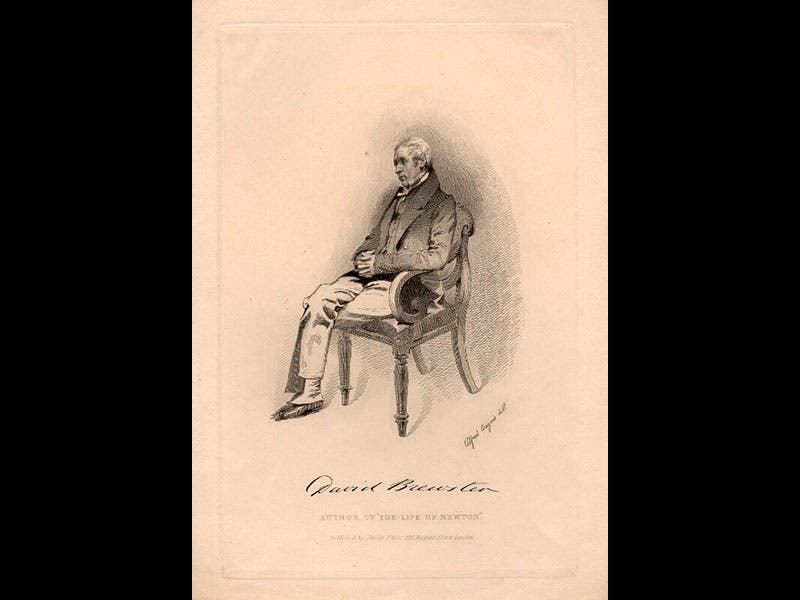Scientist of the Day - David Brewster

Linda Hall Library

Linda Hall Library

Linda Hall Library
David Brewster, a Scottish physicist, was born Dec. 11, 1781. He is best-known for inventing the kaleidoscope around 1816, which became quite a popular craze, although it didn't make Brewster much money. He also invented the stereoscope in the 1840s, for viewing pairs of pictures and producing the illusion of 3D. And he was also one of the founders of the British Association for the Advancement of Science (BAAS) in 1831, the first rival organization that the Royal Society of London had ever faced. But today, we are going to discuss Brewster’s role in Newtonian historiography, which is to say, the history of how Newton has been viewed and portrayed in the nearly 3 centuries since his death.
The first biography of Newton was written by John Conduit, his step-nephew-in-law, if that is a viable term. Conduit inherited all of Newton's papers that the other heirs did not want, but if he used them to write his biography, it does not show, for the Newton who emerges from his pages is brilliant, devout, humble, friendly, caring, and devoted to physics and God. However, in the early 19th century, some of Newton’s correspondence was brought to light by a French physicist, Jean-Baptiste Biot, who published a short biography of Newton in 1822, in which he revealed that Newton had gone mad in 1693, suffering a mental breakdown from which he never recovered. Biot maintained that after his psychotic episode, Newton could no longer do physics, and that is when he found religion. His Christian faith, in other words, developed only when his mind had weakened and could no longer handle more important matters.
When Biot’s account was translated into English in 1829, British scientists, who worshipped Newton as the greatest genius of all time, got quite a jolt. The British had little use for the French, who had recently inflicted Napoleon on the world, but this was going too far. It was Brewster who took it upon himself to defend his countryman from Gallic slurs, and he published his own short biography, The Life of Isaac Newton in 1831 (first image). Brewster was not a historian, and he did not have access to Newton's papers (they were owned by the Portsmouth family, who refused all requests for access), and so Brewster’s Newton was a reincarnation of Conduit's, a perfect human being in nearly every way, and the psychotic episode of 1693 was treated as just a minor event, the kind of thing that happens to geniuses now and then, when they have to deal with ordinary mortals. Newton had been restored to the ranks of the superhuman.
Brewster’s biography (which we have in the History of Science Collection) is historiographically very important, because it determined how Newton would be viewed for well over a century. Brewster published a much expanded version of his Life of Newton in 1855, which we also have in our collection (second image), and which contains a splendid engraved version of Godfrey Kneller’s portrait of Newton (third image), but the text presents the same exalted view of Newton, only in more detail. The situation only began to change when Newton's papers were sold at auction in 1936, purchased by the economist John Maynard Keynes, and made available for research. Once scholars were able to read the manuscripts and correspondence, the true Newton slowly emerged--brilliant still, but now arrogant, secretive, vindictive, obsessed by both alchemy and Biblical chronology, and an Anglican heretic to boot. Newton is now out of Brewster’s shiny box, and he won’t be going back in anytime soon.
For all his deficiencies as a historian, Brewster was an intelligent and clever scientist, so to give him more due, we conclude with an observation about Brewster from a contemporary—Sir Walter Scott, of Ivanhoe fame, who just happened to live right next door. Scott, in a letter of 1824, had this to say about his fellow countryman:
My dear Miss Edgeworth: Your philosophical friends arrived safe at Abbotsford, and of course were received as we would receive every friend of yours. As the Gods have not made me philosophical, I was happy to invoke the assistance of my neighbor, Dr. Brewster, an excellent fellow who talked geology, and mineralogy, and all other ologies with them to their hearts’ content.
If they gave out doctorates of ology, Brewster would no doubt have several honorary degrees.
The National Portrait Gallery in London has a score of portraits of Brewster, but nearly all are photographs from the 1860s, when he was over eighty. One lone lithograph portrait however is from the 1830s (fourth image). Note that Brewster is identified in the caption, not as the inventor of the kaleidoscope, or the founder of the BAAS, but as the author of the Life of Newton.
Dr. William B. Ashworth, Jr., Consultant for the History of Science, Linda Hall Library and Associate Professor, Department of History, University of Missouri-Kansas City. Comments or corrections are welcome; please direct to ashworthw@umkc.edu.







